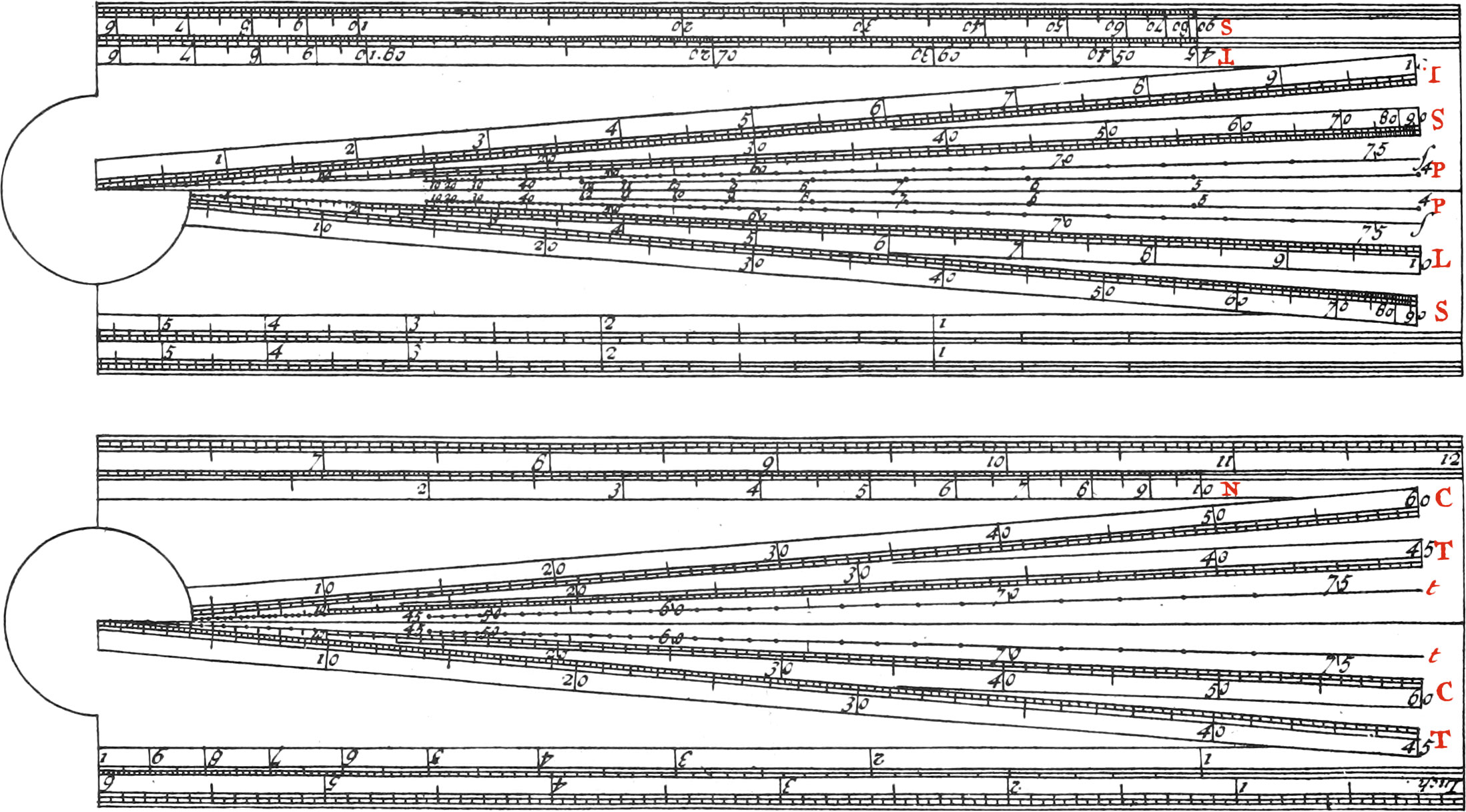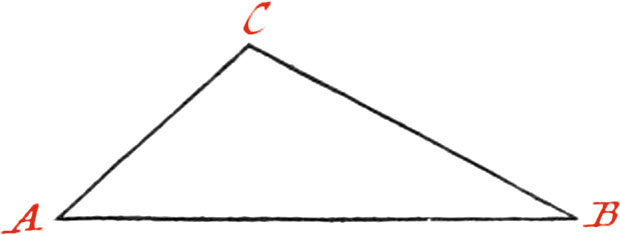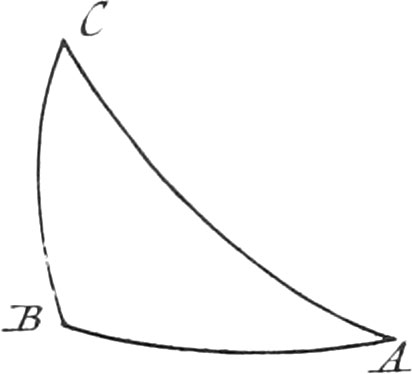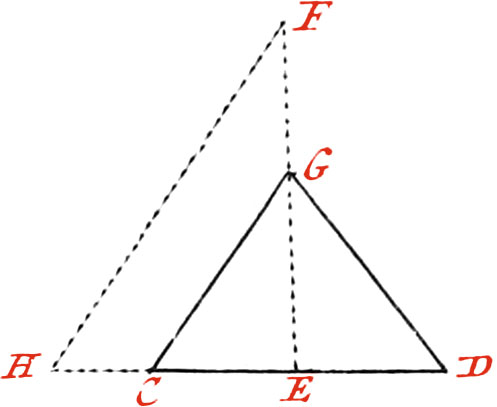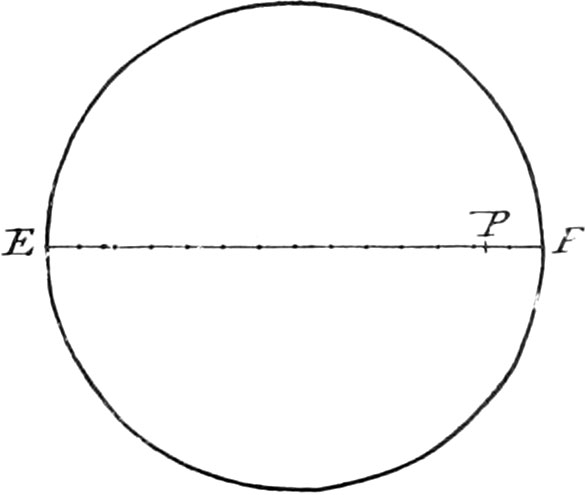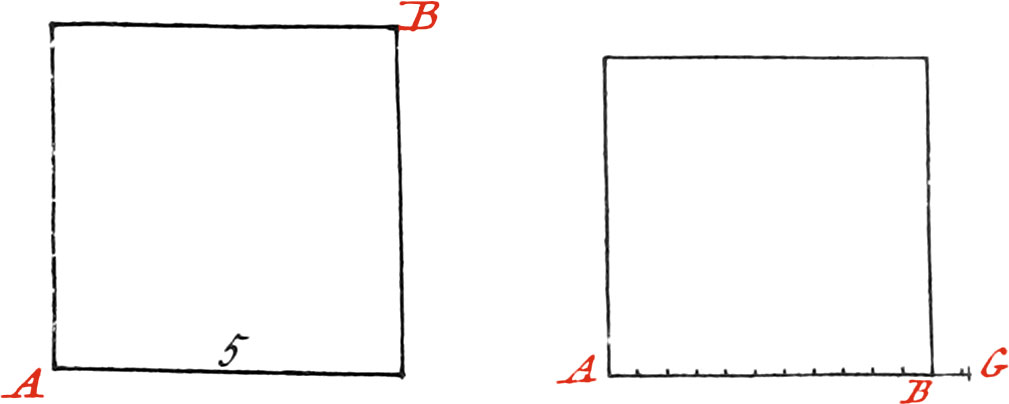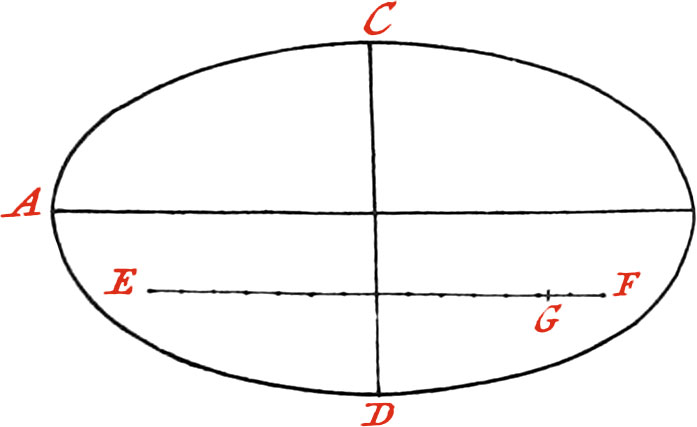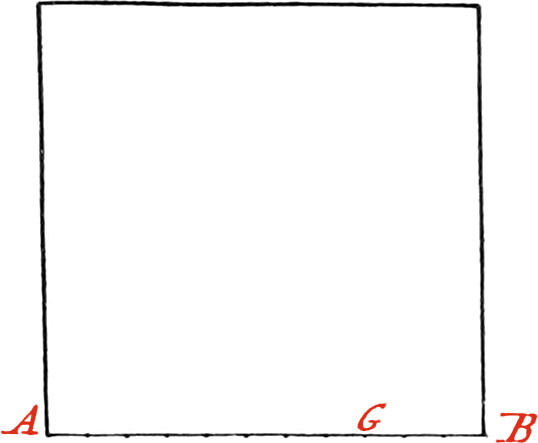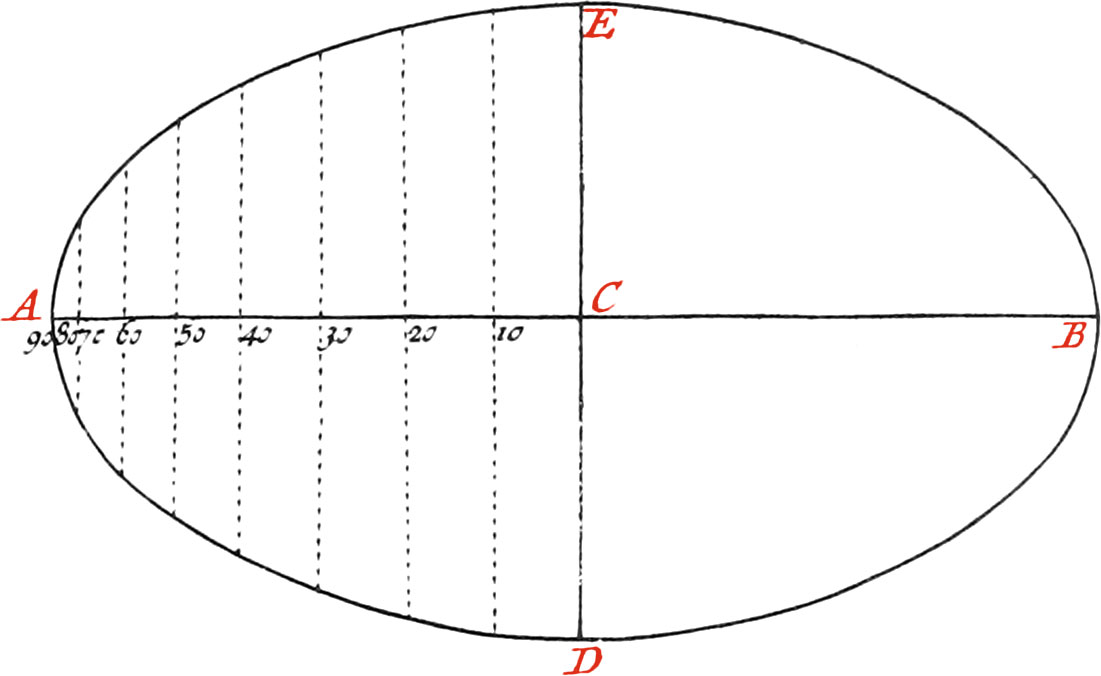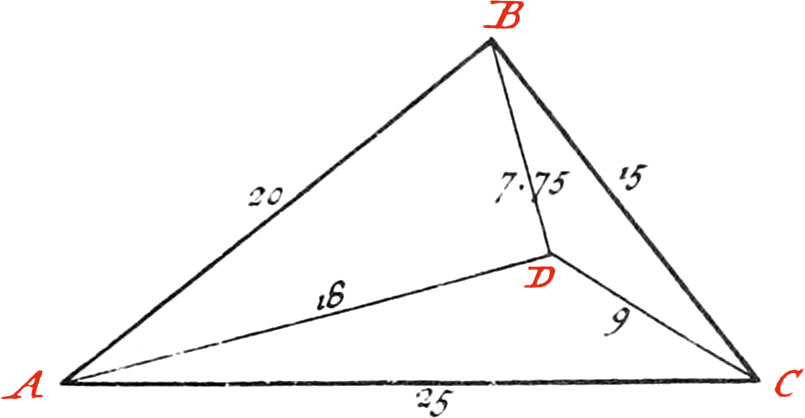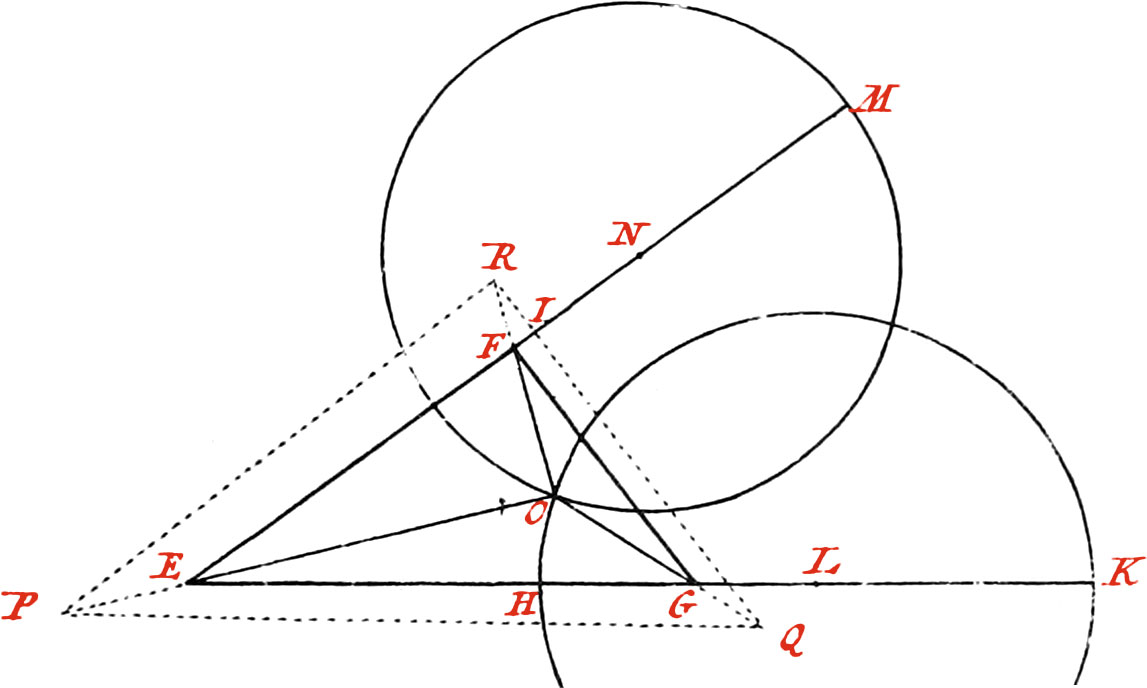The Line of equal Parts, called also the Line of Lines, is a Line divided into 100 equal Parts; and if the Length of the Legs of the Sector is sufficient, it is again subdivided into Halfs and Quarters: they are placed on each Leg of the Sector, on the same Side, and are numbered by 1, 2, 3, &c. to 10, which is very near the End of each Leg. These Lines are denoted by the Letter L; it is divided into the same Number of equal Parts, as the same Line on the Sector described by our Author. And here note, that this 1 may be taken for 10, or for 100, 1000, 10000, &c. as Occasion requires; and then 2 will signify 20, 200, 2000, 20000, &c. and so of the rest.
The Line of Chords is a Line divided after the usual way of the Line of Chords, From a Circle, whose Radius is nearly equal in Length to the Legs of the Sector, beginning at the Center, and running towards the End thereof. It is numbered with 10, 20, &c. to 60, and to this Line, on each Leg, is placed the Letter C.
The Line of Sines is a Line of natural Sines, divided from a Circle of the same Radius, as the Line of Chords on the Sector was; these are also placed upon each Leg of the Sector, and numbered with the Figures 10, 20, 30, &c. to 90; at the End of which, on each Leg, is set the Letter S.
The Line of Tangents, is a Line of natural Tangents, divided from a Circle, and is placed upon each Leg of the Sector, and runs to 45 Degrees. It has the Numbers 10, 20, &c. to 45 placed upon it, with the Letter T for Tangent.
There is likewise another small Line of Tangents, divided from a Radius, of about two Inches, and is placed upon each Leg of the Sector; it begins at 45, which stands at the Length of the Radius from the Center, and runs to about 75 Degrees or farther, having the Numbers 45, 50, &c. to 75, with the Letter t set thereto. The Use of this Line (as hereafter shall be shewn) is to supply the Defect in the great Line.
The Line of Secants is only a Line of natural Secants, divided from a Circle of about two Inches Radius. These are placed upon each Leg of the Sector, beginning, not from the Center, but at two Inches Distance therefrom, and run to 75 Degrees. To these are set the Numbers 10, 20, &c. to 75 with the Letter S at the End there of for Secants.
Finally, the Line of Polygons, denoted by the Letter P on each Leg of the Sector, is divided in the same manner as the Line of Polygons on the French Sector; only there the Number 3, for an equilateral Triangle, is the first Polygon, and here the Number 4 for a Square.
These are the principal Lines that are now put upon this Sector, to be used Sector-wise.
The other Lines, that are placed near and parallel to the outward Edges of the Sector, on both Faces thereof, and which are to be used, as on Gunter’s Scale, are,
1st, The Line of artificial Sines, numbered (as per Fig.) with 1, 2, 3, 4, 5, on one of the Legs, and with 6, 7, 8, &c. to 90, on the other Leg; which last Numbers, as they appear in the Figure, must be set backwards; to the End, that when the Sector is quite opened, they may become forwards. This Line is denoted by the Letter S, signifying Sines.
2dly, The Line of artificial Tangents, placed next below the Line of artificial Sines is numbered, on one Leg, 1, 2, 3, 4, 5, and on the other 6, 7, 8, &c. to 45. which last are likewise set backwards; but the Numbers 80, 70, 60, 50, placed at the Divisions 10, 20, 30, 40, which signify their Complements, are set forwards.
3dly, Near the Edges, on the other Face of the Sector, is a Foot divided into 12 Inches, numbered 1, 2, 3, &c. and each Inch into 20 equal Parts. There is set to it In. signifying Inches.
4thly, and Lastly, Next to that is placed Gunter’s Line of Numbers, denoted by the Letter N, as per Figure.
There are also some other Lines placed sometimes upon the vacant Spaces of the Sector, as the Lines of Hours, Latitudes, and Inclinations of Meridians; which are no otherwise used than if they were placed upon common Scales.
All the aforesaid Lines, except the small Lines of Tangents, Secants, and the Line of Polygons, are furnished with Parallels, and the Divisions marked by unequal Lines, that the Eye may the better distinguish them.
